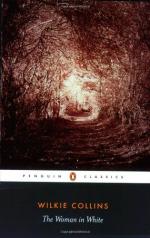At a later period the cause of this sudden determination was fully explained to me. It is not my business to relate it imperfectly, on hearsay evidence. The circumstances came within the personal experience of Miss Halcombe, and when her narrative succeeds mine, she will describe them in every particular exactly as they happened. In the meantime, the plain duty for me to perform— before I, in my turn, lay down my pen and withdraw from the story— is to relate the one remaining event connected with Miss Fairlie’s proposed marriage in which I was concerned, namely, the drawing of the settlement.
It is impossible to refer intelligibly to this document without first entering into certain particulars in relation to the bride’s pecuniary affairs. I will try to make my explanation briefly and plainly, and to keep it free from professional obscurities and technicalities. The matter is of the utmost importance. I warn all readers of these lines that Miss Fairlie’s inheritance is a very serious part of Miss Fairlie’s story, and that Mr. Gilmore’s experience, in this particular, must be their experience also, if they wish to understand the narratives which are yet to come.
Miss Fairlie’s expectations, then, were of a twofold kind, comprising her possible inheritance of real property, or land, when her uncle died, and her absolute inheritance of personal property, or money, when she came of age.
Let us take the land first.
In the time of Miss Fairlie’s paternal grandfather (whom we will call Mr. Fairlie, the elder) the entailed succession to the Limmeridge estate stood thus—
Mr. Fairlie, the elder, died and left three sons, Philip, Frederick, and Arthur. As eldest son, Philip succeeded to the estate, If he died without leaving a son, the property went to the second brother, Frederick; and if Frederick died also without leaving a son, the property went to the third brother, Arthur.
As events turned out, Mr. Philip Fairlie died leaving an only daughter, the Laura of this story, and the estate, in consequence, went, in course of law, to the second brother, Frederick, a single man. The third brother, Arthur, had died many years before the decease of Philip, leaving a son and a daughter. The son, at the age of eighteen, was drowned at Oxford. His death left Laura, the daughter of Mr. Philip Fairlie, presumptive heiress to the estate, with every chance of succeeding to it, in the ordinary course of nature, on her uncle Frederick’s death, if the said Frederick died without leaving male issue.




